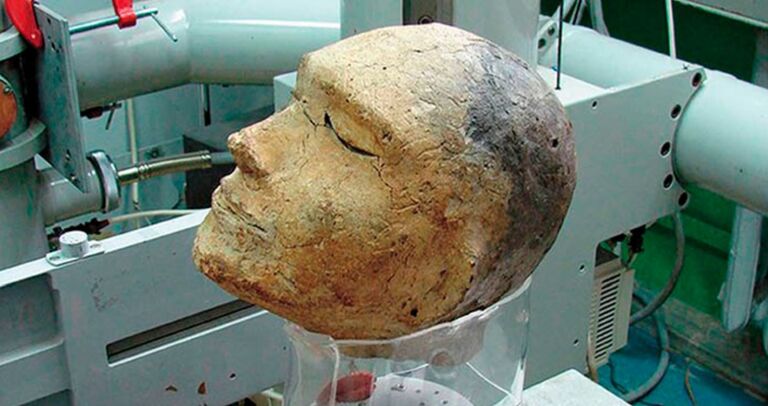2,100-Year-Old Human Clay Head Found In Siberia Has 'Impossible' Contents Inside
Since 1968, Russian archeologists have scratched their heads over one morbidly fascinating artifact — a clay death mask. Recovered by Professor Anatoly Martynov and his team at the Shestakovsky burial mound in Khakassia, Russia, the disembodied clay head provoked more questions than answers. Who was it molded after? Where was the rest of the grave? Plus the most unsettling query, what was inside that hard clay shell? Well, after decades of uncertainty, experts finally found out the truth, but it wasn't anything close to what they'd predicted.
Death Mask Discovered
It began in 1968 when Professor Anatoly Ivanovich Martynov and his colleagues discovered the clay death mask amongst other funerary items from the Tagar culture, a Siberian Bronze Age civilization from 2,100 years ago. The archeology team was delighted by this significant find and couldn't wait to see what was encased inside.
What Was Inside?
Amongst the cremated remains in the Tagar burial pit, the clay head had the potential to unlock many mysteries about the ancient South Siberian civilization. If only they could take a peek inside. Unfortunately, figuring out the secrets of Tagar burial customs had to wait. Something prevented them from removing the clay mask.
Initial X-Ray
No matter what method they used, the artifact was too fragile to dissect. Any attempt to get inside would risk doing more damage than it was worth. Researchers took x-rays in 1971, hoping this would eventually solve the mystery, but the results still left things unclear.
Reaching Their Limits
The Siberian Times reported Professor Martynov's assessment of the x-rays, "There are skull bones and a small hollow space, which, however, does not correspond to the inner size of the human skull but is much smaller." Could it still be a human? No one could say for sure. Without a way to see inside the clay, they were left looking for other clues.

